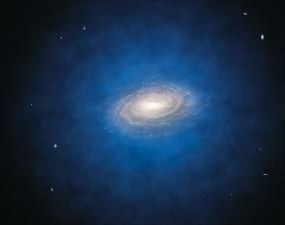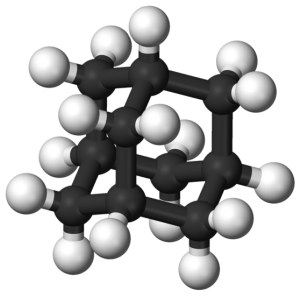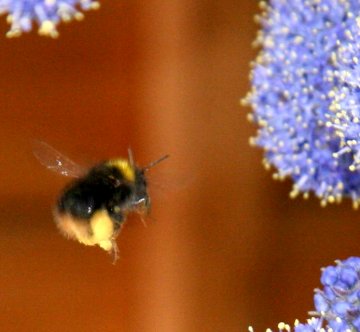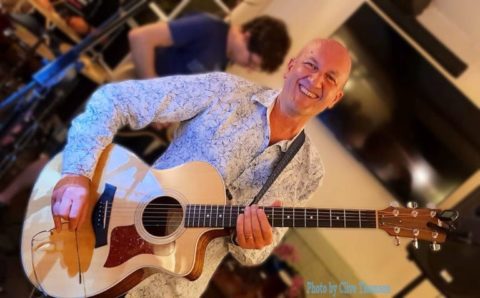 Dark matter might be found in hornets’ nests and cans of worms but not necessarily in the real world of cosmology and science. I recently reported on the work of Christian Moni Bidin which reveals serious discrepancies in science’s claims for the existence of dark matter. Of course, such observations would inevitably draw criticism and a recent blog post highlights these as well as pointing to another preprint that contradicts the work.
Dark matter might be found in hornets’ nests and cans of worms but not necessarily in the real world of cosmology and science. I recently reported on the work of Christian Moni Bidin which reveals serious discrepancies in science’s claims for the existence of dark matter. Of course, such observations would inevitably draw criticism and a recent blog post highlights these as well as pointing to another preprint that contradicts the work.
It has always struck me that dark matter, and indeed, dark energy are kludge factors to shoehorn observations into current theories. They allude not to mysterious, invisible forces, but to gaps in our understanding, surely. As Feynman once said: “It doesn’t matter how beautiful your theory is, it doesn’t matter how smart you are. If it doesn’t agree with experiment, it’s wrong.”
With that thought in mind, I asked Moni-Bidin to comment on the blog post. This is what he had to say:
“The blogger writes: ‘In my earlier post I remarked that this study makes a number of questionable assumptions about the shape of the Milky Way Halo – they take it to be smooth and spherical’. This is a bad misunderstanding of my work,” Moni-Bidin says, “which I found often reported in other sites also. My measurement of the mass density does not require any assumption about the shape of the Halo, spherical, flat, cubic or whatsoever. Contrary to previous works, it is model-independent. Then, I compare the results with the predictions of spherical halos, but simply because it is the most favourable case for the dark matter models, a prolate halo giving trouble to the theory itself, and an oblate halo being in larger discrepancy with the results. Moreover, I did not create those models. Had the specialists theorized that the dark halo was triangular, I would have compared with triangular models, it’s not a choice of mine.”
He comments more generally about the very common criticism that “the results rely on too many assumptions and some should be wrong”. “Maybe,” he says. “But, I share my assumptions with all previous literature (which is celebrated as detecting much dark matter). Simply, they are so basic that many works did not even mention them, but you can see that they are inside any formulation. The difference is that previous work assumed them plus other strong simplifying hypothesis, which I could release because today we have large databases available that once were prohibitive. But this is what we call science: when you match the models, the assumptions are OK, when not, the same assumptions must be wrong.”
It will be interesting to see the outpouring of hornets as the papers wend their way through the refereeing process. I will keep you informed.
 Over the years there has been a lot of tomato talk, about how lycopene, the red pigment found in this fruit (yes, it’s definitely a fruit, it’s got seeds), could ward off cancer, specifically prostate cancer. It has also been linked to protecting us from cardiovascular disease, per the common discussions about the so-called Mediterranean diet. It is not a panacea and tests and trials have been small-scale. Nevertheless, as with the likes of that other infamous compound, resveratrol found in red wine, researchers are keen to demonstrate a link with their particular natural chemical and disease prevention.
Over the years there has been a lot of tomato talk, about how lycopene, the red pigment found in this fruit (yes, it’s definitely a fruit, it’s got seeds), could ward off cancer, specifically prostate cancer. It has also been linked to protecting us from cardiovascular disease, per the common discussions about the so-called Mediterranean diet. It is not a panacea and tests and trials have been small-scale. Nevertheless, as with the likes of that other infamous compound, resveratrol found in red wine, researchers are keen to demonstrate a link with their particular natural chemical and disease prevention. Adamantane, the invincible molecule, was discovered in petroleum in 1933 and stimulated a whole new field in chemistry, that of research into polyhedral organic compounds. It might be thought of as the tiniest possible building block of diamond, which is after all an infinite 3D network of carbon atoms essentially pinned on the adamantane structure minus the hydrogens. Adamantane itself has been modified for practical applications in the pharmaceutical industry, in polymer science for heat-stable lubricants and others uses, and as molecular building blocks in nanotechnology. But, this “diamondoid” and its chemical cousins might also be the molecular mavens we need to guide hydrocarbon exploration.
Adamantane, the invincible molecule, was discovered in petroleum in 1933 and stimulated a whole new field in chemistry, that of research into polyhedral organic compounds. It might be thought of as the tiniest possible building block of diamond, which is after all an infinite 3D network of carbon atoms essentially pinned on the adamantane structure minus the hydrogens. Adamantane itself has been modified for practical applications in the pharmaceutical industry, in polymer science for heat-stable lubricants and others uses, and as molecular building blocks in nanotechnology. But, this “diamondoid” and its chemical cousins might also be the molecular mavens we need to guide hydrocarbon exploration. There are millions of supplements on the market, most are untested in any clinical setting and are beyond pharma regulations. They’re available over-the-counter, without a prescription and may be contaminated with toxins, heavy metals and other nasties, especially those bought from far-flung places via the Internet. Some may be marginally useful in helping people recover from certain conditions although there is a dearth of evidence that any really do anything at all. Sometimes they can lead to adverse reactions including anaphylaxis and interfering with liver enzymes leading to problems with other products, including blocking prescription drugs or leading to metabolites staying in the bloodstream too long, with potential for heart, kidney, liver and other organ damage..
There are millions of supplements on the market, most are untested in any clinical setting and are beyond pharma regulations. They’re available over-the-counter, without a prescription and may be contaminated with toxins, heavy metals and other nasties, especially those bought from far-flung places via the Internet. Some may be marginally useful in helping people recover from certain conditions although there is a dearth of evidence that any really do anything at all. Sometimes they can lead to adverse reactions including anaphylaxis and interfering with liver enzymes leading to problems with other products, including blocking prescription drugs or leading to metabolites staying in the bloodstream too long, with potential for heart, kidney, liver and other organ damage..